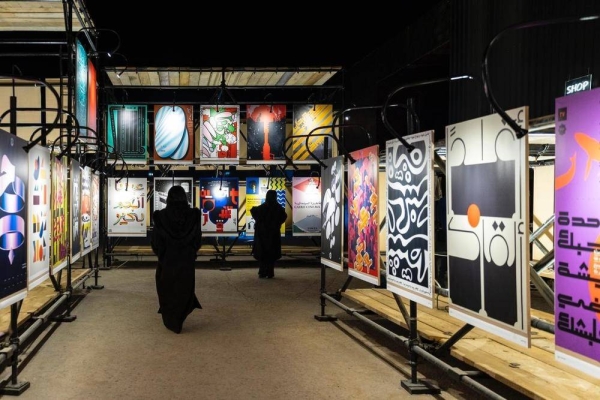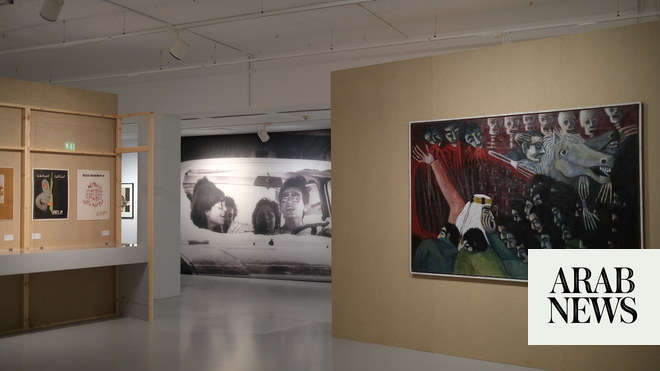
DUBAI: Throughout the 20th century, Paris became a new home for artists from across the Arab world. Young, aspiring creatives from the Levant and North Africa moved to the French capital to study or seek refuge during political upheaval in their homelands.
For the latest updates, follow us on Instagram @arabnews.lifestyle
Set to wrap up next week, the exhibition “Arab Presences: Modern Art and Decolonization: Paris 1908-1988” at the Musée d"Art Moderne (also known as MAM) offers an exploration of a unique facet of the history of modern art by tracing the rarely documented links between Paris and Arab creatives. Curated by Morad Montazami with assistance from Odile Burluraux and Madeleine de Colnet, the exhibition aims to explore the impact Arab artists left on the French art scene and how Paris affected their work.
“The exhibition is dedicated to reviving the history of Arab artists and their links with Paris, to tell a story that has never been told in this way,” Burluraux told Arab News. “It shows — through exhibitions, acquisitions, articles — how the trajectories of some Arab artists were intertwined with the Parisian art scene at the time. However, it will certainly contribute also to enrich Arab art history. Because it reveals mutual interests, curiosity, shared moments.”
The exhibition is organized chronologically, beginning in 1908, the year in which the Lebanese poet and artist Gibran Khalil Gibran arrived in Paris and the year that saw the opening of the Ecole des Beaux-Arts in Cairo. The show runs until 1988, when the first exhibition devoted to contemporary Arab artists at the Institut du Monde Arabe, which had officially opened in Paris a few months earlier in 1987, took place.
Featured in the exhibition are more than 200 works, many of which have rarely been exhibited in France, and more than 130 rarely shown artists whose works offer a significant contribution to the study of the Arab avant-garde movement and the history of art in the 20th century. Major Arab artists including Iraqi artist Jamil Hamoudi, Algerian painter Baya, Iraqi artists Dia Azzawi, Kadhim Hayder and Rafa Nasiri and Turkish artist Fahrelnissa Zeid are also present.
“Paris at the beginning of 20th century was an important colonial empire,” Burluraux said.“The French language was spoken in most of North Africa and the Middle East. Arab artists who wanted to complete their art education were travelling to Paris to study in official art schools or ateliers.”
Paris then became a place where modernity became a source of inspiration, a chance also to break free from styles of art that were taught in Arab French colonies.
“Paris was also a place of emancipation, of awakening of consciousness about de-colonialism,” Burluraux explained. “It was also a place to get rid of the orientalist style that was still taught in their origin schools.”
In many ways, as the exhibition demonstrates, Paris was not just a place of refuge but a breeding ground for artistic discovery, experimentation and also artistic liberty.












